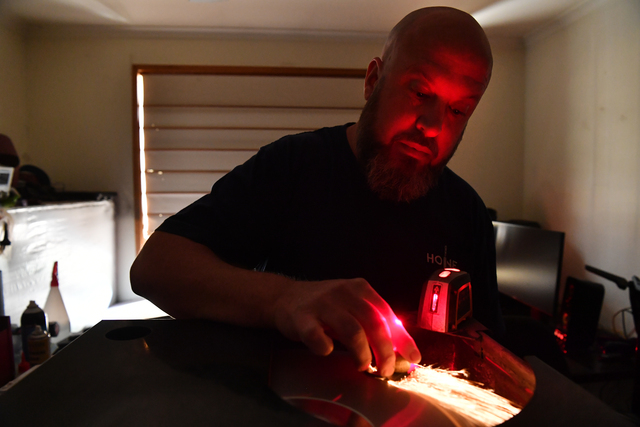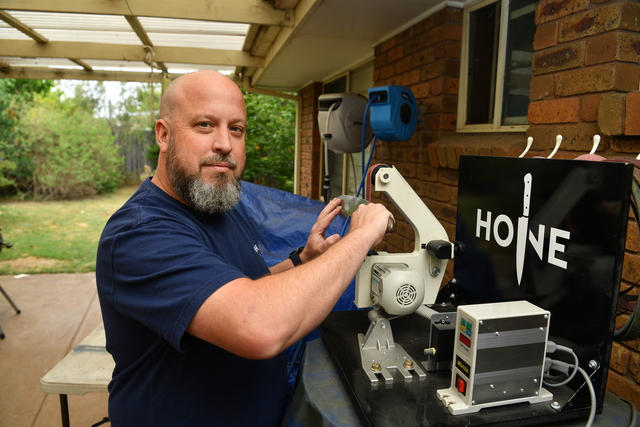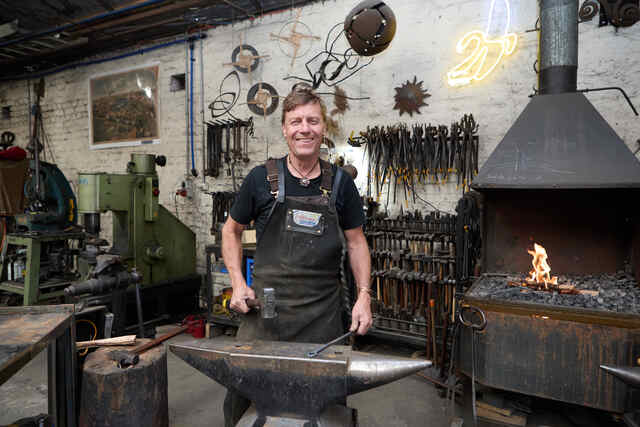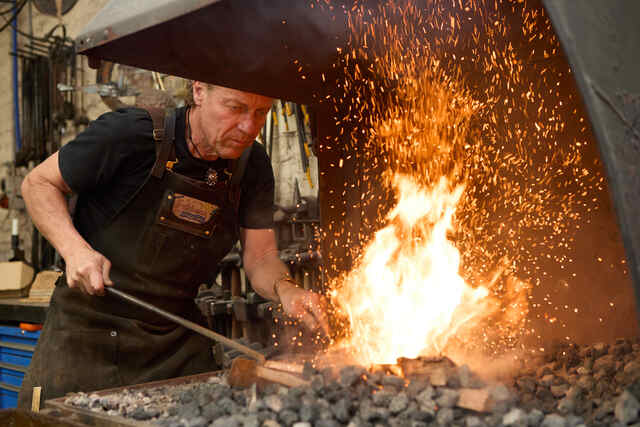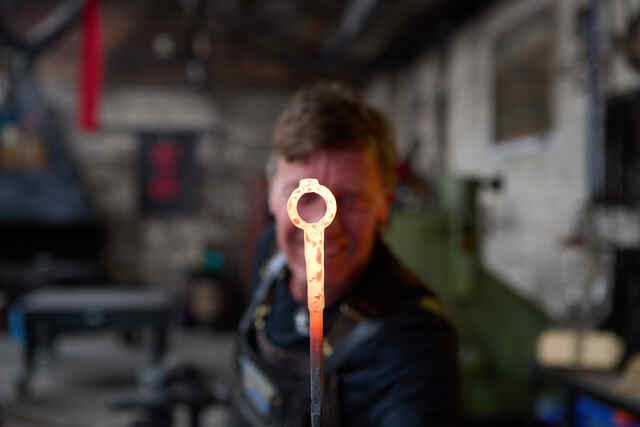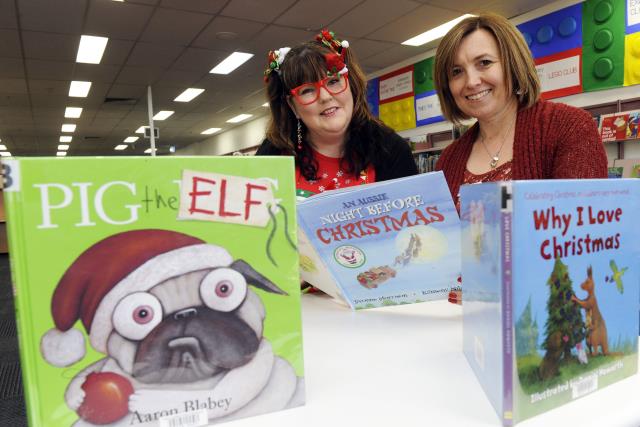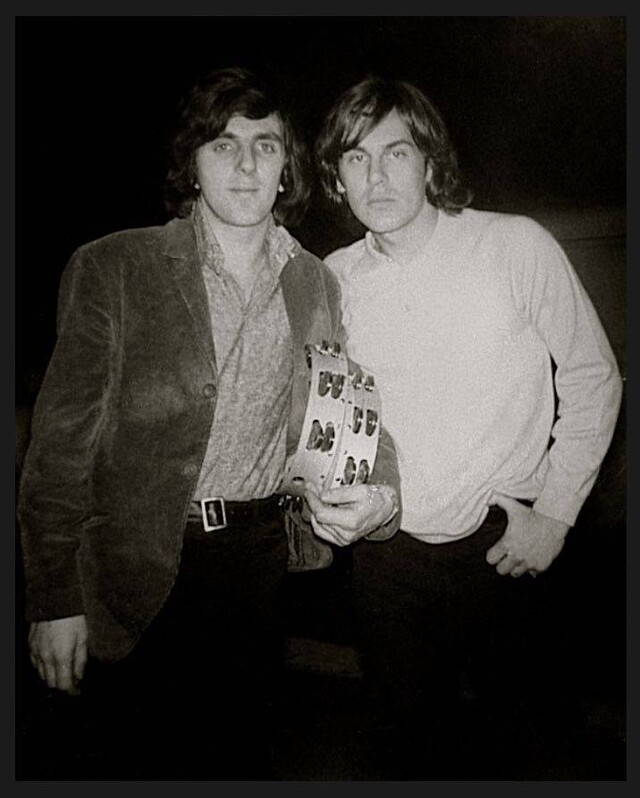With the rise of AI threatening to put many employees and their professions out of business, Cade Lucas talks to two tradesmen whose jobs are endangered, but not extinct.
When it comes to choosing a career path, some follow their dreams, some follow their parents, some fall into careers by accident, while the vast majority choose occupations based on their education, qualifications, where they live and what they can get.
And then there’s people like Justin Nemeth who one day in 2015 needed to get one of his knives sharpened.
“I couldn’t find anyone and I just thought bugger it, I’ll learn it.”
The 45-year-old was true to his word.
Almost a decade on, Mr Nementh is a professional sharpener, operating his own business, Hone Sharpening, out of a workshop at his home in Bacchus Marsh on Melbourne’s north-western outskirts.
“I sharpen knives, I sharpen scissors, clipper blades, garden tools,” he said reeling a list of tools and utensils he commonly works on.
It’s an explanation that isn’t really necessary given the job of a sharpener is pretty straight forward.
What’s less obvious though is that there are still people like Mr Nemeth who do it for a living.
Afterall, isn’t sharpening one of these professions that a combination of technology and consumer habits have made obsolete?
Surely people who want to sharpen knives, scissors or tools or anything else with a blade can do so at home. Isn’t there a sharpening machine or device you can buy at the supermarket or Bunnings?
And even if there’s not, it must be cheaper to throw out blunt blades and buy new ones?
The answer to all these questions is, of course, yes.
But while the passing of time has made old industrial era professions like sharpening an endangered species, they’re not yet extinct.
Like Mr Nemeth, there are still people slaving away in suburban workshops and backyard sheds, pursuing careers that most of us assumed only existed in museums.
Another of those working against the dying of the industrial light is Steve Phillips, though rather than sharpening metal blades, he fashions them into shape.
Mr Phillips is a blacksmith at Waterside Metal Art Studio in Footscray, though in a sign that even the most time honoured professions aren’t immune to change, he prefers are more modern title to describe his job.
“I actually refer to myself as a metal smith now because I don’t just work with steel, but with copper, brass, aluminium, titanium, all sorts of metals,” said Mr Phillips, who originally trained as an environmental scientist, but switched to smashing bits of hot metal while travelling in Europe nearly 20 years ago.
“I had some time off and I went to Europe and I did some sculpture and blacksmithing at night school in Antwerp, Belgium.”
Other than a stint at night school 17 years ago, Mr Phillips, like Mr Nemeth, is largely self taught, with no blacksmithing or sharpening apprenticeships available.
“You don’t need to be officially qualified,” said Mr Phillips of being a blacksmith.
“You can do a TAFE course, but it’s not called blacksmithing, it’s a certificate IV in metal fabrication and there’s only one place in Australia that does it. Ultimo TAFE in Sydney.”
Despite his own lack for training, Mr Phillips also teaches blacksmithing to others, with classes at his Footscray studio accounting for most of his income.
“Corporate team building experiences and normal classes for the general public,” he said of the types of classes he offers.
“You can come and forge all sorts of unique things at the studio.”
Mr Phillips also runs an annual Blacksmithing festival, but when he does have customers, they can have him doing everything from fixing a metal fence bent out of shape, to creating a whole new section.
Like Mr Phillips, Mr Nemeth supplements his income elsewhere, working for an NDIS provider and doing landscape photography when not sharpening blades.
But unlike metal or blacksmithing, demand for his work appears more constant.
“I’ve got chefs, I look after the dog grooming industry, hairdressers and barbers, all the horsey people because they clip their horses in winter,” Mr Nemeth said of his regular customers.
He said for people whose work requires sharp tools, paying a bit extra for his services was worth it.
“It’s $10 a knife to get them sharpened through me and you can’t buy a decent knife for $10,” he said, before adding a rather uncharitable assessment of any knife purchased for that amount.
“It’s gonna be, excuse me, a piece of shit,” Mr Nemeth laughed.
While the job of blade sharpening might be old fashioned, the way it’s done in 2024 isn’t, with Mr Nemeth saying the old hand stone method had been consigned to history.
“It’s all machinery now,” he said.
“Much quicker and gives us a similar result.”
What type of machinery though depends on what’s being sharpened.
“Your knives will be done on a variable speed belt grinder and that runs specialty belts to keep the steel cool,” he said.
“Scissors are done on what’s known as a flat hone, it’s basically a horizontal spinning disc with specialty arms that are fully adjustable to every angle up to 90 degrees. Clipper blades are done on a clipper machine, that’s another horizontal spinning plate that grinds a hollow into the blade.”
According to Mr Phillips, tools used for blacksmithing have also moved with the times.
“A modern day blacksmith is using all sorts of modern tools such as mig welders and grinders which the old worldy blacksmith didn’t have access too,” he said.
As with sharpening though, modern tools might have advanced blacksmithing and made it easier, but the fundamentals of applying heat to metal to make it malleable and then bashing it into shape, remain the same.
“The day to day activities (of a blacksmith) often incorporate techniques that have been around for hundreds if not thousands of years,” said Mr Phillips who, now aged 57, estimates he’s got another 15 to 20 years left before hanging up his hammer and tongs for good.
Mr Nemeth wasn’t sure when he’d retire, but had no doubt that when he did, the job of sharpening blades would continue on without him.
“It’ll be here till the end of days.”

